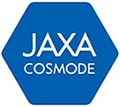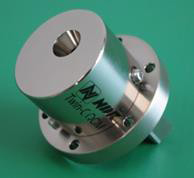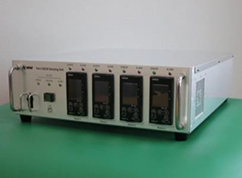Twin QCM, Meets the Demands of Eliminating Contamination
March 10, 2017 (JST)
Nihon Dempa Kogyo Co., Ltd.
National Research and Development Agency
Japan Aerospace Exploration Agency (JAXA)
Nihon Dempa Kogyo Co., Ltd. and JAXA have codeveloped the world's first sensing system Twin QCM, which under vacuum monitors outgases emitted from components/materials for spacecraft. Twin QCM adopts a new system, which confers Twin QCM improved accuracy and stability compared with conventional QCM systems. Expectations for Twin QCM are high- the system will contribute to contamination countermeasures for production of space apparatus, both for domestic and international use.
In Space, contamination caused by outgassing from plastics, adhesives, and other materials used for manufacturing poses a problem. Contamination on the surfaces of the telephoto lenses which earth and astronomical observation satellites are equipped with can deteriorate the optical performance and quality. It can also result in the reduction of the lifespan of the observation instruments. Selection of appropriate materials based on accurate monitoring is essential to minimize the emission of outgases.
To gauge outgases QTGA method*1 operated by the quartz oscillator sensor has been predominantly employed. Devices are typically comprised of a thin piezoelectric AT-cut quartz crystal sandwiched between two metal excitation electrodes. Conventional QTGA estimates the amount of outgas deposition by calculating the discrepancy of the readings of the two. In the process, analysis of deposition and desorption of the outgas emitted from the sample in the temperature controlled chamber identifies the contents of the outgas. However, the disparities of the behavior and the temperature of the two quartz oscillator sensors undermine high precision.
To overcome the challenge, Nihon Dempa Kogyo Co., Ltd. and JAXA worked on and have succeeded in creating the new QCM sensor, which uses the twin sensor technology.
Twin QCM sensor applies the twin sensor method, with both reference and sensing electrodes on one crystal oscillator sensor, which solves the issue of data gaps. Twin sensing technology earns Nihon Dempa Kogyo Co., Ltd. a patent, which operates its NAPiCOS, a bioanalytical device. JAXA, in cooperation with Nihon Dempa Kogyo Co., Ltd., overcame the technical challenge and conducted test evaluation on Twin QCM.
Nihon Dempa Kogyo Co., Ltd. is planning on sales of Twin QCM for domestic and foreign space institutions and related industries as its target markets. The product will be identified as JAXA COSMODE*2, and will serve other general businesses, including semiconductor and construction material makers. To them, precise gauging of outgases is of primary concern, as their manufacturing process demands monitoring nanoparticle purity.
| *1 | QCM Thermo-Gravimetric Analysis; gauging method based on Quartz Crystal Microbalances. (QCM) When an AC voltage is applied to the electrodes of QCMs, the quartz crystal oscillates at a characteristic frequency based on the crystal geometry, referred to as the resonant frequency. To determine mass changes in the material coating, monitoring is done of the resonance frequency of the quartz crystal using an impedance analyzer. During coating deposition, the resonance frequency decreases, with the shift in frequency directly proportional to the change in mass. |
|---|---|
| *2 | JAXA COSMODE; JAXA official brand. JAXA grants JAXA COSMODE to merchandises coproduced by JAXA and private businesses, and produced by and with the use and application of exclusive and non-exclusive technologies at JAXA's disposal, and JAXA registered properties. JAXA launched JAXA COSMODE to promote the progress of space development and to present to society the benefit of and space exploration sponsored and approved by Japanese government. |
Twin QCM sensor (Image) |
Controller (Image) |
Twin QCM Sales start in April, 2017
Specifics
| Twin QCM sensor | |
| Standard oscillation frequencies | 10.278 MHz (Fund) 30.833 MHz (3rd.OT) |
| Sensor range | 2.39 × 108 (Hz/g) /cm2 (Fund) 6.27 × 109 (Hz/g) /cm2 (3rd.OT) |
| Measurable Temp range | -196 ~ +125 °C |
| Package size | Φ35.0 × 23.3 (H) mm |
| Controller | |
| Standard oscillation frequencies | 30.833 MHz ± 500 kHz 10.278 MHz ± 180 kHz |
| Frequency resolution | ≦ 0.01Hz |
| Operational temp range | +10 ~ +40 °C |
| Supply voltage | AC 100 ~ 240 V |
| Package size | 440 (W) × 132 (H) × 500 (D) mm |
| Weight | ≦ 10kg |